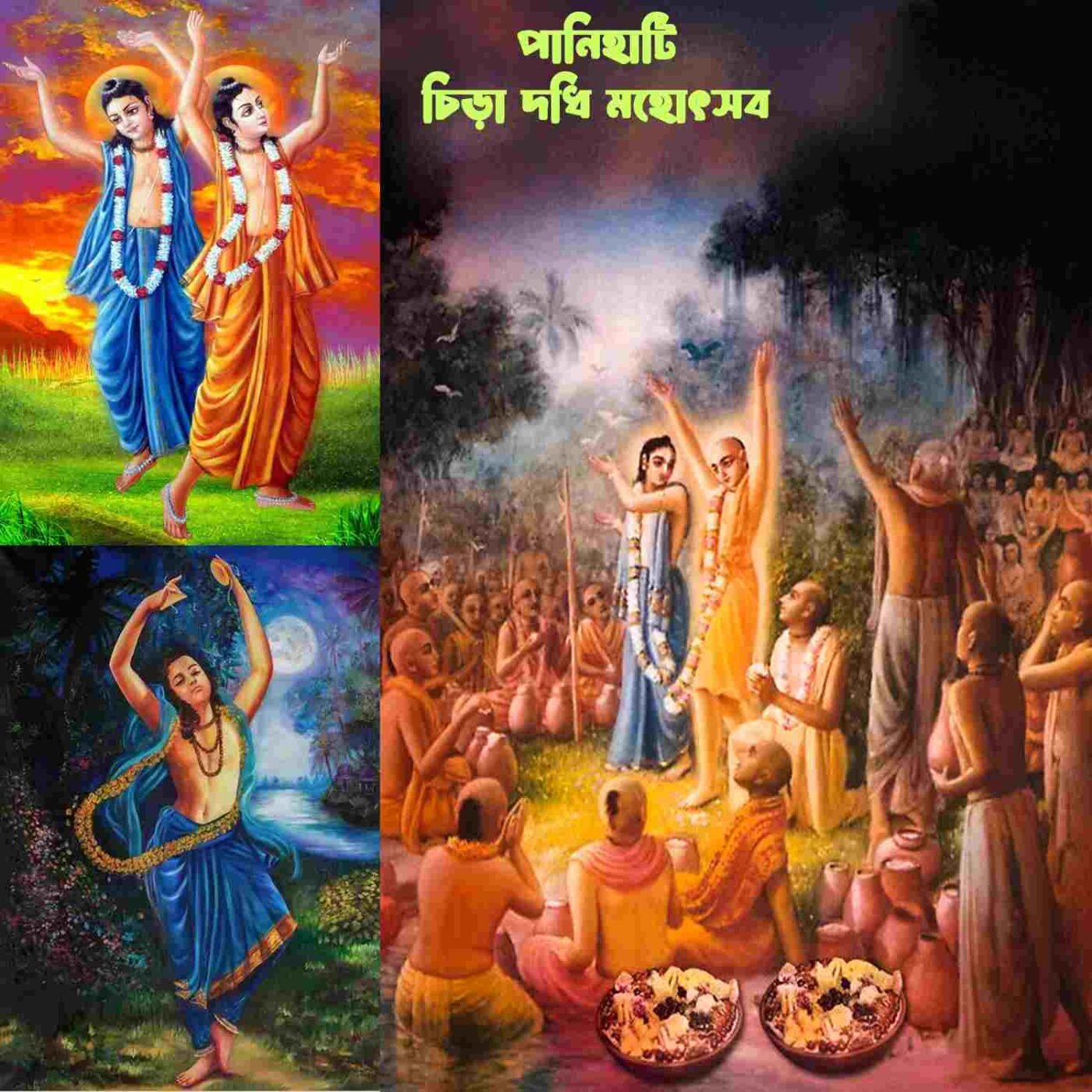Natural Vegetation of West Bengal:- The state of West Bengal is rich in forest cover areas. A wide variation in the natural vegetation found in the state due to the presence of variations in soil, topography, and other climatic factors. The state has the biggest mangrove forest in the world.
Additionally, a wide variety of forests is found in West Bengal. Forests are spread over the state from the Northernmost tip of Himalayas (i.e., on the slopes of the high Himalayas) to the Duars (i.e., in the foothills of the Western regions). Before considering the types of forest in West Bengal, we should know about its recorded forest area and forest cover.
I. RECORDED FOREST AREA IN WEST BENGAL
The term ‘Recorded Forest Area‘ typically refers to ‘all the geographical areas (landmass) recorded in the government records‘. According to the Indian State of Forest Report 2019, the Recorded Forest Area (RFA) in West Bengal is 11,879 sq km (which comprises 13.38% of its geographical area). However, it is lower than the national average of 23%. Out of the recorded forest area (RFA), the reserved forest area is 7,054 sq km (59.38%), protected forest area is 3,772 (31.76%) and the unclassed forest area is 1,053 (8.86%).
From 1st January 2015 to 5th February 2019 in West Bengal, approx 305.77 hectares of forest land was diverted for non-forestry purposes under the Forest Conservation Act, 1980 (MoEF & CC, 2019). However, 568.42 ha of plantations were raised during that last two years in the State.
II. FOREST COVER IN WEST BENGAL
The Forest Cover in West Bengal is 16,901.51 sq km. (19.04% of the State’s geographical area). Forest Cover in the State has risen by 54.51 sq km as compared to the prior assessment reported in ISFR 2017.
The forest cover consists of Very Dense Forests (VDF) (3.40%), Moderately Dense Forests (MDF) (4.69%), Open Forests (OF) (10.95%) and Scrub Forests (SF) (0.16%) of the total geographical area.
Table: Forest Cover of West Bengal
| Class | Area | % of GA (Geographical Area) |
| VDF | 3,018.52 | 3.40 |
| MDF | 4,160.26 | 4.69 |
| OF | 9,722.73 | 10.95 |
| Total | 16,901.51 | 19.04 |
| Scrub | 146.12 | 0.17 |
The non-forest area of the state is 80.86%. The district with the highest forest cover in Darjiling (75.19% of geographical area), Jalpaiguri (45.97% of its geographical area), and South 24 Parganas (27.99% of geographical area). Least forest cover is in Kolkata with 0.54% of its area under forest cover.
Table: District-wise Forest Cover Area (in sq. km.)
| District | Geographical Area (GA) | Very Dense Forest | Mod. Dense Forest | Open Forest | Total | % of GA |
| Bankura | 6,882 | 222.33 | 395.27 | 667.98 | 1,285.58 | 18.68 |
| Barddhaman | 7,024 | 57.53 | 91.78 | 190 | 339.31 | 4.83 |
| Birbhum | 4,545 | 1 | 34.14 | 149.66 | 184.8 | 4.07 |
| Dakshin Dinajpur | 2,219 | 0 | 5.83 | 81.29 | 87.12 | 3.93 |
| Darjiling | 3,149 | 720.76 | 654.52 | 992.52 | 2,367.80 | 75.19 |
| Haora | 1,467 | 0 | 50 | 253.77 | 303.77 | 20.71 |
| Hugli | 3,149 | 0 | 14 | 146 | 160 | 5.08 |
| Jalpaiguri | 6,227 | 724.22 | 434.92 | 1,703.26 | 2,862.40 | 45.97 |
| Koch Bihar | 3,387 | 0 | 27 | 322.06 | 349.06 | 10.31 |
| Kolkata | 185 | 0 | 0 | 1 | 1 | 0.54 |
| Maldah | 3,733 | 0 | 209.04 | 282.65 | 491.69 | 13.17 |
| Murshidabad | 5,324 | 0 | 53.06 | 291.83 | 344.89 | 6.48 |
| Nadia | 3,927 | 1 | 160.16 | 318.84 | 480 | 12.22 |
| North Twenty Four Parganas | 4,094 | 13.02 | 184.98 | 524.98 | 722.98 | 17.66 |
| Paschim Medinipur | 9,368 | 256.21 | 591.64 | 1,313.69 | 2,161.54 | 23.07 |
| Purba Medinipur | 4,713 | 1.99 | 197.96 | 620.1 | 820.05 | 17.4 |
| Puruliya | 6,259 | 37.36 | 306.94 | 571.58 | 915.88 | 14.63 |
| South Twenty Four Parganas | 9,960 | 983.1 | 745.03 | 1,060.58 | 2,788.71 | 27.99 |
| Uttar Dinajpur | 3,140 | 0 | 3.99 | 230.94 | 234.93 | 7.48 |
| Grand Total | 88,752 | 3,018.52 | 4,160.26 | 9,722.73 | 16,901.51 | 19.04 |
** Source: India State of Forest Report (ISFR), 2019
III. CLASSIFICATION OF FORESTS IN WEST BENGAL
The forests in West Bengal are categorised into 6 broad categories on the basis of soil, moisture, altitude, and other climatic factors. These are mentioned below:
01. Tropical Moist Deciduous Forest
02. Tropical Dry Deciduous Forest
03. Sub-tropical Broad-leafed Wet Hill Forest
04. Montane Wet Temperate Forest
05. Sub-alpine Forest
06. Littoral and Swamp Forest / The Mangroves Forest
(01) TROPICAL MOIST DECIDUOUS FOREST
This type of forest is observed in the lower reaches of North Bengal mainly in the districts of Alipurduar, Jalpaiguri, and Coochbehar (Terai region). Around the entire Duars and Terai area are the main sites of the tropical moist deciduous forest.
The main species varieties found in this forest are the betel nut, champ, coconut, jackfruit, mango, mahua, sissoo, simul, teak, sal, etc.
(02) TROPICAL DRY DECIDUOUS FOREST
This type of forest is observed in the Western plateau regions of West Bengal in the districts of Bankura, Birbhum, Bardhaman, Purulia, East Midnapore and West Midnapore.
The main species varieties found in this forest are sal, peasal, kend, mahul, kusum, karam, asan, bahera, rahara, dhaw, mango, jam, etc. Forest products are mainly used in paper mills, timber, matchbox, bidi, rope making, silk production factories.
(03) SUB-TROPICAL BROAD-LEAFED WET HILL FOREST
This type of forest is located in the middle ranges of North Bengal with an altitude between 300 m-1650 m. The forest mainly belongs to the areas are Phuguri, Mirik, Kuhi, upper Sumbong, upper Reyong, Majua, lower Babukhola, etc in the districts of Darjeeling, Kalimpong, and some parts of Jalpaiguri.
The main species varieties usually found in this forest are mowa, katus, panisaj, lek, malata, kawla, etc.
(04) MONTANE WET TEMPERATE FOREST
This type of forest is located in upper ranges of North Bengal with an altitude between 1650 m-3000 m. The forest mainly belongs to the districts of Darjeeling and Kalimpong especially in the areas of Kankibong, Lopchu, Little Rangit, Mahaldiram, Paglajhora, Selimbong, etc.
The main species varieties usually found in this forest are oak, maple, pine, fir, deodar, and spruce.
(05) SUB-ALPINE FOREST
This type of forest is observed in the very high ranges of North Bengal hills (generally in the Northern part of the Darjeeling district) with an altitude between 3000 m – 3700 m. The main sites of this forest are Phalut, Sandakphu, Sabarkum, etc.
The species commonly found in these forests are junipers, birch, rhododendrons, berberis, milling bamboo, laurel, etc. Oak and magnolia trees are found in the region of Kalimpong. Dwarf rhododendrons, meadows, and small flowering bushes are found in the upper Singalila range.
(06) LITTORAL AND SWAMP FOREST / THE MANGROVE FOREST
Salinity tolerant forest ecosystem is called mangrove forest. The largest mangrove forest is Sundarban around the world. This mangrove forest generally develops in the coastal intertidal zone. In West Bengal, this type of forest is observed in Ganga-Brahmaputra delta (Sundarbans) i.e. in the South 24 Parganas district and Southern region of North 24 Parganas districts. This forest situates at just 0 to 10 m above sea level.
This type of forests mostly contains Sundari mangrove trees. The trees of mangrove forests having breathing roots and they are usually very large to stand in deep mud. The other main species found in these forests are Keora or Keya, casuarina trees, goran, geowa, baen, dhundal, etc. A variety of wildlife such as Royal Bengal Tigers, Gangetic River Dolphin, crocodiles, spotted deer, rhino, wild boar, monkey, fishing cats, foxes, pangolin, jungle fowl, king cobras, prawns, crabs, water insects etc. reside in mangrove forests. A variety of birds species also reside here, such as Kingfisher, White-bellied Sea eagle, Plovers, Lap-Wings, Curfews, Whimbrels etc.
The forests of Sundarbans are recognised as the World Heritage Site in 1987 by UNESCO. Due to the availability of many fish species in the rivers, tribal people have settled their life in this forest, and they also collect honey and wax as well.
Two main commercial products are Honey and wax extracted from these forests.
IV. WEST BENGAL FOREST DEPARTMENT
West Bengal Forest Department was established in 1864 in Kolkata. The key objective of the Department is the maintenance of environmental stability via preservation and restoration of the ecological balance and conservation of the natural heritage and resources. The department manages various projects that are mentioned below:
➢ WEST BENGAL FOREST AND BIODIVERSITY CONSERVATION PROJECT
The aims of this project are to develop a forest ecosystem, conserve biodiversity, and improve living conditions for the locals. It is controlling and managing the project in association with the Japan International Cooperation Agency (JICA) since 2013.
➢ WEST BENGAL WASTELAND DEVELOPMENT COOPERATION LIMITED
This organization was established in 1989, and it took up the management of forestry and other allied activities. Apart from that it also creates green shelter-belts, landscaping and timber harvesting.
➢ WEST BENGAL FOREST DEVELOPMENT CORPORATION LIMITED
This organization was established in 1974 to develop allied activities associated with forestries like eco-tourism, management of plantations, wood-based industries, and overall forest area.
➢ WILD BENGAL
This division of the department takes care of the 6 national parks and 15 wildlife sanctuaries in the state which are constituted under the Wildlife Protection Act on 9th September 1972.
It also operates vulture conservation centre, animal rescue centres, and exercises estimation of tigers, leopards, elephants, and rhinos.
➢ WEST BENGAL STATE FOREST DEVELOPMENT AGENCY
The main focus of this agency is to conserve forests along with developing income opportunities for the local people, so it organizes eco-tourism centres, jungle camps in the Terai region of Jalpaiguri district.
➢ NAMARNI GANGE
The Central Government runs this mission in five states, namely Bihar, Jharkhand, Uttarakhand, Uttar Pradesh, and West Bengal. At present, it is managed by West Bengal Forest Department for maintaining the biodiversity of the Ganga river ecosystem along with its purification.
Joint Forest Management (JFM) has developed a major component of forest management in the state. West Bengal becomes a pioneer of JFM in India. The main objective of the JFM is to reduce the biotic pressure on the forests; as a result, the forests are conserved to the most productive levels and the biodiversity of the forests remains unaffected indeed.
The JFM encourages Panchayats in the state to participate in the conservation and management activities. This resolution has been taken in 1994 and revised in 2008. Currently, the JFM is performing in the Darjeeling hills and Western plateau regions of the state.

Tutorial 11: Agriculture And Irrigation in West Bengal
Tutorial 10: National Parks And Wildlife Sanctuaries in West Bengal
Tutorial 09: Drainage System / River System of West Bengal
Tutorial 05: Geographical Features of West Bengal
Tutorial 04: Modern History of Bengal & Popular Movements
Tutorial 03: Medieval History of Bengal
Tutorial 02: Ancient History of West Bengal
Tutorial 01: West Bengal Basic Information





















